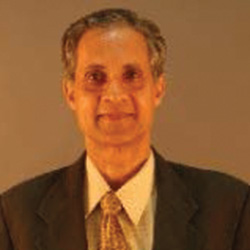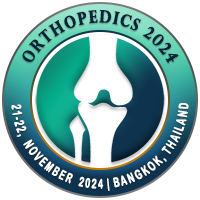
Vijay Panchanadikar
Deenanath Mangeshkar hospital, IndiaTitle: Image based, trackerless, non invasive, universal, real time system “Navigation in orthopaedic and trauma surgery”
Abstract
The first CAOS navigation systems for pedicle screw insertion in spine surgery were presented by Lavallee et al, (1995) and Nolte et al, (1996). Currently, available computer-assisted orthopaedic surgery systems are generally based on 3-D image data acquired preoperatively in a computed tomography (CT) scanner. However, there is now an increasing interest in using intraoperative imaging for navigation. The main advantages of the CT-based system are that it is specific to the patient's anatomy and can be used in cases of deformities. The main drawbacks are errors due to changing bone anatomy during surgery and the requirement of additional trained manpower. The C-arm is a common piece of equipment in operating theaters and is familiar to orthopaedic surgeons, who can readily interpret fluoroscopic images. Image-guided navigation can be undertaken when the images are available after the reduction of the fracture. The concept is to eliminate trial and error associated with a guide wire and implant positioning in orthopaedic surgery, guided by the principle “Do it right, the first time, every time”. We developed a Navigation system which is an Image-based, trackerless, non-invasive, universal, real-time system that can be used across all bone fractures for any implant manufacturer and any C-arm. It predicts and visually displays, by templating, the future position of the guide wire and bone implants in 2D and 3D for fracture fixation. Six modules for various bones were developed and successfully tested, first in bone models, then on patients. The results of an academic trial concluded that when the system is used, there is improvement noted in the various parameters of implant positioning like reduction in radiation, reduction in time, and reduction in the number of attempts. The system is well supported by two patents, one Indian and one in the US.
Biography
Dr Vijay Panchanadikar completed his masters in
orthopaedics in 1989, and since then he is active in
orthopaedic practice, academics and teaching. He is a
senior consultant and Post graduate teacher, at
Deenanath Mangeshkar hospital, PUNE. INDIA.
He has numerous publications to his credit and has
presented his work at various national/international
conferences. He has been a reviewer for orthopedic
manuscripts for several reputed journals. He is a keen
researcher, and is serving as an Ethics Committee
Chairman/member for associated hospitals. His deep
interest is in emerging technologies, and serves as
advisor/evaluator of various Government sponsored
projects in the field of medicine.

